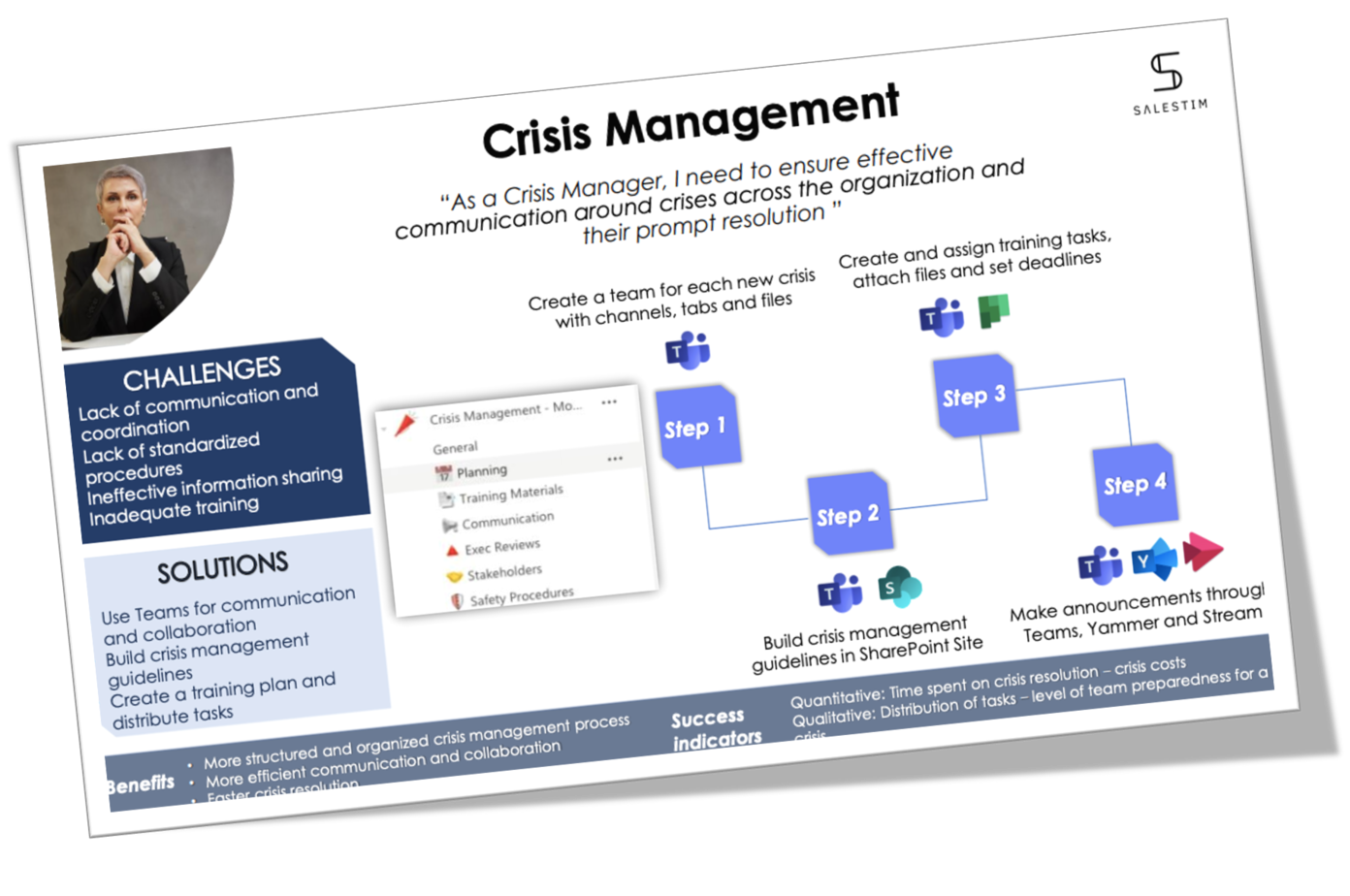It’s been over a year since the COVID-19 pandemic took over the world. What many of us thought would last a couple weeks, is still ongoing today. We thought that by now we would be back to “normal” but instead, we all revised our definitions of “normal.” Take remote work as an example. A lot of employees resisted it at first but fast forward a year and working remotely is a benefit that many organizations offer. And remote work is not the only workplace trend. In this article, we want to share with you some workplace trends that we’ve seen emerge in the past year.
To help you and your team work efficiently during demanding times, we will be discussing five big workplace trends, what enables them, and how they can impact the internal organization at your workplace.
Trend #1 Remote work is staying

How popular do you think remote work was in the US a few years ago? During the pre-pandemic period, roughly 6 % of full-time in-house employees worked remotely. Statistics show that in 2019, working from home was a rare case for employees who worked from the office. In other cases, a larger group of US workers would work remotely occasionally. Insert COVID-19 and the picture changed drastically.
According to the Current Population Survey (CPS), 48.7 million individuals, which is approximately 35% of employees, reported that they shifted to remote work due to the coronavirus outbreak.
From 6% to 35% – this is a huge increase. It is one of the workplace trends that is surely here to stay. Now, a large group of employers are comfortable to run their companies remotely and hire employees who want to work remotely.
Shifting to a remote mode of working created some mixed feelings among employees. It reduced or rather eliminated time spent on commuting, and it cut costs (e.g., eating and drinking out). But on the other hand, recreating a work environment virtually was challenging. And that’s when technology stepped in. Tech solutions have played a significant role in simplifying the transition of work modes.
To this day, technological solutions such as Microsoft Teams continue to facilitate remote work. Microsoft Teams allows people to seamlessly collaborate and maintain their productivity regardless of their location.
The native and third-party features of Microsoft Teams successfully recreate an in-person work environment in the virtual domain. Through Microsoft Teams, you can:
- Have structured workspaces for focused collaboration (teams and channels),
- Hold online meetings,
- Chat with your colleagues,
- Share, store and work collaboratively on documents,
- Submit and manage requests (e.g., Approvals app), etc.

Would you like to explore use cases for Microsoft Teams?
Download our free Microsoft Teams Use Case Catalog
4 steps to effective use of Microsoft Teams
Trend #2 Asynchronous mode is growing in popularity
Asynchronous mode is basically the next level of remote work. As work culture is constantly evolving, employees opt for having a flexible schedule in order to maintain their work-life balance.
Asynchronous work refers to the collaboration in a team where participants communicate from different time zones, whether it is from the office, remotely, or a mix of both. This work mode stands out for allowing employees to work whenever convenient for them, breaking the traditional hours of availability of staff members at the office. For instance, in an asynchronous workplace, team members aren’t expected to instantly reply to messages. They can do so whenever they are available.
Have you ever been in a video conference that could have been an email? We all have. In asynchronous teams, most communication is done through writings – chats, emails, etc.
Here’s a tip: a lengthy email can cause a person to miss important information. Instead, you could email an instructional video to your teammates so that they can watch it on their own time!
As you can see, communication is key in such teams and maintaining effective communication can be challenging. So, it’s up to platforms like Microsoft Teams to help you stay connected with the rest of the team. First, it serves as a database where people can easily access files and share documents swiftly. Second, communication between teams becomes very simple; employees are able to send real-time reports on their tasks and collaborate on projects when and if they are all available. Third, the app can be installed on desktop and mobile devices, allowing users to respond wherever they are. Plus, Microsoft Teams can be integrated with a number of helpful apps including Outlook, so you can stay on top of your emails.
Learn more about how Microsoft Teams helps in the transition of new work modes here.
We prepared an infographic where you can learn more about the future of work trends.

Trend #3 Security as a growing concern

Next to new work modes, another workplace trend that has been growing increasingly is concerns regarding security. And this trend is quite closely linked with the other two. Remote, hybrid, asynchronous – all these entail a lot of online work. Therefore, it is important to use online platforms and tools that secure company-wide information and keep its integrity. As more organizations are shifting to teleworking, leaders should be aware of the possible security threats that come along with the use of apps and communicative platforms.
In order to ensure the security of the data that your employees handle on a daily basis and to comply with data protection regulations, organizations need to use professional collaborative tools. Microsoft Teams is one of the best in that sense, and here is why:
Multi-factor authentication
This solution is a security protocol that urges the provision of two or more identity verification forms from users before they are able to access an account.
Unified endpoint management (UEM)
UEM solutions enable organizations to manage all devices that are connected to the network, as well as checking the applications installed on both the desktop and mobile devices.
Endpoint protection
This solution protects all devices that are connected to your corporate network from malicious malware and spams.
Learn more about Microsoft Teams security best practices.
Trend #4 Meeting rooms becoming more online conference-friendly

One of the biggest workplace trends (again driven by remote and hybrid work) that we’ve seen lately is the emergence of smart conference rooms. The basics of smart conference rooms are cameras, screens, and mics – basically the essentials of online meetings. But most smart conference rooms have a myriad of other key features and/or gadgets such as:
- Virtual assistants
- The use of whiteboards and screen recorders
- 360-degree video cameras
By having a variety of advanced tools at your disposal, you are able to transcribe conferences manually and refer to data from previous projects. You can also pull up a chart to use in your presentation using a smart marker if you are looking for using a digital whiteboard.
Smart meeting rooms enhance your video conference experiences, which is equivalent to the elevation of collaboration capabilities. The investment in high-quality meeting rooms will increase the motivation of employees to work, as innovations positively impact employee satisfaction. Plus, it makes the collaboration of on-site and remote team members so much easier. Online meetings will be easy to organize and the communication among the team will drastically improve.
If and when you have a smart conference room, you can take advantage of the benefits that Microsoft Teams offers. Using Microsoft Teams, you can have the best experience in hosting small team meetings, larger company meetings, and even webinars. The app provides advanced features during meetings, including:
- Recording and auto-recording
- Call quality control
- Spotlight participants during discussion for visibility
- Share system audio on Mac
- Improved sharing content in a Teams meeting
- Managing members who can turn on their camera
- Seamlessly inviting attendees who can contribute without being a Teams user
- Managing microphone settings
Trend #5 Emerging means of bringing teams together

Aligning the company-wide departments cohesively is crucial for the growth of the company. When team members build strong professional relationships with each other, the organization as a whole runs more smoothly. It’s a bit more complicated to do in remote, hybrid and asynchronous teams, so with the rise of aforementioned work modes, we also see a rise in different methods aimed at bringing teams together. So, the last of our workplace trends is about the different methods and means aimed at bringing teams together.
The underlying purpose of each of these is to enhance communication and the overall internal performance.
Daily standup meetings
These are short meetings (so short that you can do the whole thing while standing) in which participants share status updates. It provides space for everyone to share what they’ve been up to and keep the rest of the team posted on their progress.
Retrospective meetings
As described in the name, retrospective meetings offer spaces for people to think, express, and reflect on their progress. This type of meeting is a collective process in which members are expected to participate, with the purpose of building a dynamic team.
Coffee/lunch breaks
While the previous two were strictly related to work, this one is a bit more informal. Encourage your team members to get together during lunch breaks via an online call. You can also have designated coffee breaks, which people can spend together. The idea is to promote interaction between team members and friendly lunch and coffee breaks are an excellent opportunity.
With new work and workplace trends on the rise, Microsoft Teams remains one of the most reliable, professional tools to use for any work mode. Its numerous tools and features will enable your employees to work efficiently in a remote and asynchronous work environment. From security solutions and document sharing, to hosting meetings and maintaining effective communication, Microsoft Teams has all the advanced equipment you will need for your remote workforce.
Contact our team if you wish to learn more how you can make the most out of these trends and provide your teams with all the necessary tools to collaborate in the most efficient way. SalesTim solution helps organizations improve collaborative processes at scale by creating fully customized workspaces through Collaboration Templates, advanced Governance Policies and 3-rd party app integration.
